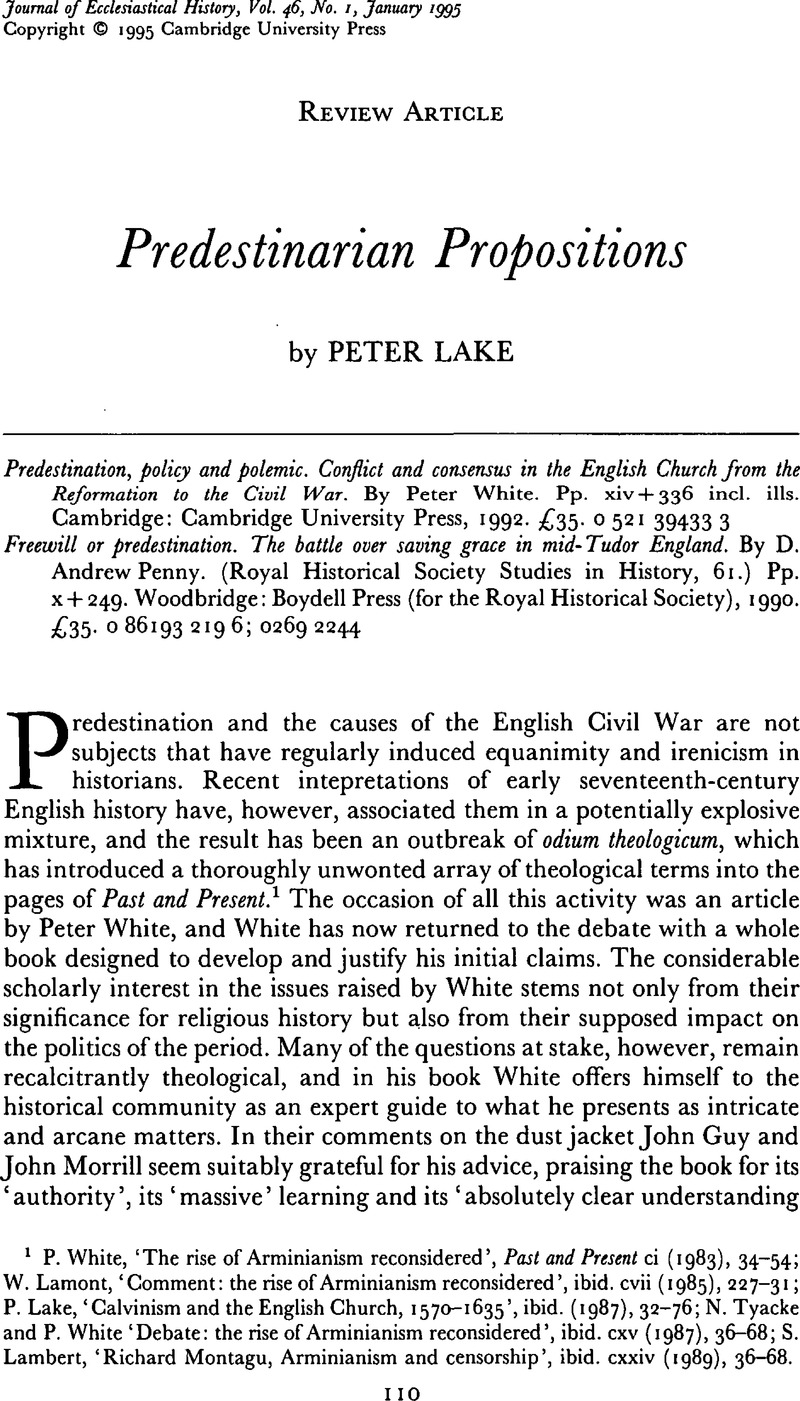Article contents
Predestinarian Propositions
Published online by Cambridge University Press: 06 February 2009
Abstract

- Type
- Review Article
- Information
- Copyright
- Copyright © Cambridge University Press 1995
References
1 White, P., ‘The rise of Arminianism reconsidered”, Past and Present ci (1983), 34–54CrossRefGoogle Scholar; W. Lamont, ‘Comment: the rise of Arminianism reconsidered”, ibid, cvii (1985), 227–31; P. Lake, ‘Calvinism and the English Church, 1570–1635”, ibid. (1987), 32–76; N. Tyacke and P. White ‘Debate: the rise of Arminianism reconsidered”, ibid, cxv (1987), 36–68; S. Lambert, ‘Richard Montagu, Arminianism and censorship”, ibid, cxxiv (1989), 36–68.
2 Muller, R., Christ and decree, Durham, NC 1986Google Scholar.
3 For more support for these positions see K. Fincham and P. Lake, ‘The ecclesiastical policies of James 1 and Charles 1”, P. Lake, ‘The Laudian style”, and A. Milton, ‘The Church of England, Rome and the True Church: the demise of a Jacobean consensus”, all in Fincham, K. (ed.), The early Stuart Church, London 1993Google Scholar. See also P. Lake, ‘Calvinism and the English Church”, and ‘Lancelot Andrewes, John Buckeridge and avant garde conformity at the court of James 1”, in Peck, L. L. (ed.), The mental world of the Jacobean court, Cambridge 1992Google Scholar; ‘Anti-popery: the structure of a prejudice”, in Cust, R. and Hughes, A. (eds), Conflict in early Stuart England, London 1989Google Scholar; ‘Puritanism, Arminianism and a Shropshire axe-murder”, Midland History xv (1990), 37–64Google Scholar; ‘Serving God and the times: the Calvinist conformity of Robert Sanderson”, Journal of British Studies xxvii (1988)Google Scholar; and ‘The moderate and irenic case for religious war: Joseph Hall's Via Media in context/s”, in a volume of essays on political culture in seventeenth-century England forthcoming from Manchester University Press.
- 1
- Cited by


